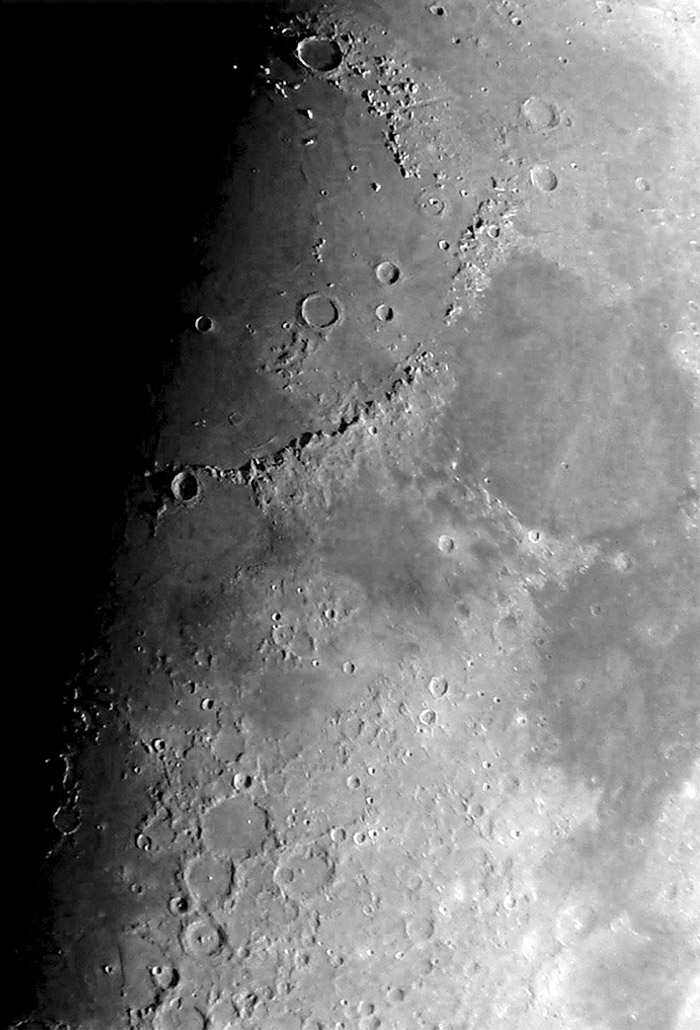December 10, 2023
Exploring the Intermediate Zone
Originally published November 23, 2013
 image by Daniel Leclerc, Pointe-aux-Trembles (Montreal), Quebec, Canada |
When imaging the Moon, lunar observers love zooming in on lunar features in order to see interesting details. This is very good, but it sometimes makes it hard to figure out where these objects are compared to other well-known features. Of course, lunar maps and books can help for that purpose, but large scale images and even a good descriptive text are not always sufficient. Images showing intermediate size surfaces sometimes provide relevant and optimal information, at least for specific cases. As a newbie, it took me a lot of time understanding the Straight Wall location and I decided to take an picture helping others to figure it out. I was my own main motivation taking this picture. We see several famous lunar structures. "The Straight Wall" (also called "The Sword") is located in a crater at the bottom left. We recognize its form of "saber". The Sea of Rains is at the top left, partially in shadow. The Sea of Serenity is seen at the top right, above the Sea of Tranquility, which is darker. Mid-height of my photo, you can see the chain of the grandest mountains on the Moon: the Apennines, a chain of lunar mountains that extend over a curve near 600 km with peaks up to 5000 meters high.
|
Yesterday's LPOD: Still Sad
Tomorrow's LPOD: Never Too Much
COMMENTS?
Register, Log in, and join in the comments.



